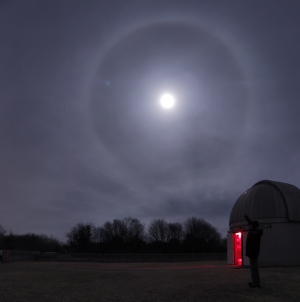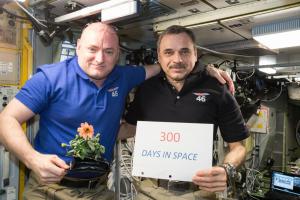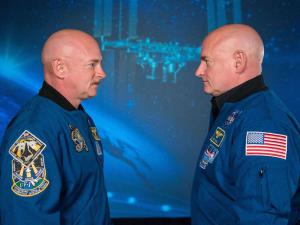
Stargazing Night
- Where:
- Frosty Drew Observatory
- When:
- Friday February 26, 2016 at 6:00 p.m.
- Cost:
- $1 Suggested Donation per Person
Tonight's is Stargazing Night at Frosty Drew Observatory and forecast are actually calling for clear skies all night long, amazing! We can expect clear skies and cold temps with blustery conditions becoming calmer overnight. Additionally, we will have a few hours of dark moonless skies before the 87% waning gibbous Moon rises at 9:30 p.m. It looks like we may finally have a chance to catch a view in our telescopes tonight and satisfy our astro-geek jones.
We will open the Observatory and Sky Theatre at 6:00 p.m. tonight. In the Observatory we will start with views of a few binary stars until twilight passes. After which, the awesome Orion Nebula will be on display. Jupiter will be visible to our telescopes after 7:30 p.m. and the bright gibbous Moon after 10:00 p.m. The Sky Theatre will feature toasty warm temps and a showcase of celestial objects photographed at Frosty Drew Observatory. We will stay open until the Moon chases us out, probably around 11:30 p.m. We will post a “Closing up” message on our Twitter (@FrostyDrewOBSY) and Facebook when we decide to pack it in.
Overall, considering the horrific conditions of late, tonight offers us the first chance in quite a while to actually observe the sky and that makes it an awesome night in my mind. Tonight's forecast will bring a bit of wind early in the night which should settle as the night continues. There is a slight chance of periodic wind gusts upwards of 23mph, which could restrict us to one side of the sky. The bright Moon will eventually obscure our view of galaxies, nebulae, and star clusters; so no galaxy hunting tonight. But clear dark skies early in the night will grant fabulous astro-fix opportunities. So grab some serious winter garb and head out to Frosty Drew Observatory tonight and become re-acquainted with your inner asto-geek that has been chained up all winter.
-------------------------------------------------------------------------
Weekly Happenings
Scott MacNeill
New England winters bring very cold, near extreme, winter conditions. This is a surprise to many life-long New England residents, though it is true whether we like it or not. At first thought, this reality makes the idea of being out under the stars in a cold observatory sound rather uninviting and less-than-ideal for the average Rhode Island beach junkie. Though dressing properly and adequately can make all the difference between a miserably cold night in the snow and a fabulous winter stargazing experience. At Frosty Drew, we spend a lot of time exposed to the cold winter nights of New England and we've learned a few tricks along the way to help keep us warm the whole night while we enjoy fabulous starscapes and amazing winter celestial moments. And we wrote a primer on how to dress like a true winter stargazing fanatic. Now gear up, get out and revel in the fabulous winter time starscapes. This is New England, snow happens!
This coming Tuesday, March 1st, the first International Space Station (ISS) residents to complete one year in space will return to the weight of regular Earth gravity. The two residents to complete the one year in space are American astronaut Scott Kelly and Russian cosmonaut Mikhail Kornienko. Though their one year on board the ISS is nearing completion, their mission is still ongoing.
Meeting the challenge of living in micro-gravity environments for a period of a year are necessary to prepare for long term space missions. Missions like the journey to Mars, living on a lunar outpost, and other long term ISS missions will all expose crew members to the rigors of space living. Evaluating how the human body deals with muscle loss and atrophy due to weightlessness, increased exposure to cosmic rays and radiation, bone degradation and more, help us prepare countermeasures to boost physical and mental well being during these long missions.
Astronaut Scott Kelly, though amazingly qualified for this challenge, has another specific advantage. He has an identical twin brother, Mark; who is a former astronaut. By performing a Twins Study, we can monitor, measure and compare changes in physiology, behavioral health, microbiology, and more. Tests on both Mark and Scott Kelly began one year before launching to the ISS and will continue for up to six years after Scott Kelly's return.
During Scott Kelly's stay on the ISS he not only participated in one-year mission studies and investigations, but also took part in about 400 other science studies conducted on the ISS. His duties included taking blood, urine, and saliva samples; documenting his activities, tasks, and experiences; caring for and harvesting two crops (romaine lettuce, and zinnias); as well as performing ocular scans, testing robotic satellites, assisting in cubesat deployment, floating around the ISS in a gorilla suit, and measuring radiation exposure; all on top of completing his regularly assigned ISS maintenance tasks, including three spacewalks.
The successful completion of this first one-year in space study will significantly benefit humanity's chances in reaching our goal of boots on Mars, building a lunar outpost, and sending human crews further and further to the reaches of the Solar System and beyond. It is another step on the the awesomeness ladder of incredible things that humans can figure out and do. Follow along with astronaut Scott Kelly and see for yourself why Time listed him as one of 2016's most influential people in the world.
-Scott



